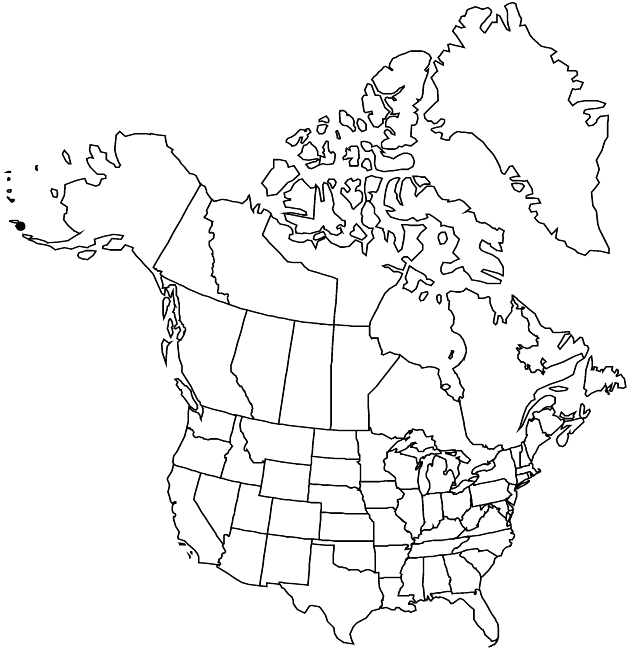Difference between revisions of "Cirsium kamtschaticum"
in A. P. de Candolle and A. L. P. P. de Candolle, Prodr. 6: 644. 1838.
FNA>Volume Importer |
imported>Volume Importer |
||
| (6 intermediate revisions by 2 users not shown) | |||
| Line 1: | Line 1: | ||
{{Treatment/ID | {{Treatment/ID | ||
|accepted_name=Cirsium kamtschaticum | |accepted_name=Cirsium kamtschaticum | ||
| − | |accepted_authority=Ledebour ex | + | |accepted_authority=Ledebour ex de Candolle |
|publications={{Treatment/Publication | |publications={{Treatment/Publication | ||
|title=in A. P. de Candolle and A. L. P. P. de Candolle, Prodr. | |title=in A. P. de Candolle and A. L. P. P. de Candolle, Prodr. | ||
| Line 24: | Line 24: | ||
|elevation=0–100 m | |elevation=0–100 m | ||
|distribution=Alaska;Asia (Japan;Siberia). | |distribution=Alaska;Asia (Japan;Siberia). | ||
| − | |discussion=<p>Cirsium kamtschaticum grows in the western Aleutian Islands, eastern Siberia, Sahkalin, the Kurile Islands and northern Japan (Hokkaido). It is one of only two species of the genus that have native populations in the Old World and the flora area. Neither reaches the North American mainland.</p> | + | |discussion=<p><i>Cirsium kamtschaticum</i> grows in the western Aleutian Islands, eastern Siberia, Sahkalin, the Kurile Islands and northern Japan (Hokkaido). It is one of only two species of the genus that have native populations in the Old World and the flora area. Neither reaches the North American mainland.</p> |
|tables= | |tables= | ||
|references= | |references= | ||
| Line 33: | Line 33: | ||
-->{{#Taxon: | -->{{#Taxon: | ||
name=Cirsium kamtschaticum | name=Cirsium kamtschaticum | ||
| − | + | |authority=Ledebour ex de Candolle | |
| − | |authority=Ledebour ex | ||
|rank=species | |rank=species | ||
|parent rank=genus | |parent rank=genus | ||
| Line 48: | Line 47: | ||
|publication year=1838 | |publication year=1838 | ||
|special status= | |special status= | ||
| − | |source xml=https:// | + | |source xml=https://bitbucket.org/aafc-mbb/fna-data-curation/src/2e0870ddd59836b60bcf96646a41e87ea5a5943a/coarse_grained_fna_xml/V19-20-21/V19_56.xml |
|tribe=Asteraceae tribe Cardueae | |tribe=Asteraceae tribe Cardueae | ||
|genus=Cirsium | |genus=Cirsium | ||
Latest revision as of 20:53, 5 November 2020
Perennials, 25–200 cm; rhizomes stout. Stems single, erect, ± glabrous to variably tomentose with coarse, jointed, multicellular trichomes and/or fine smooth trichomes; branches 0–few, ascending. Leaves: blades broadly elliptic to obovate, 15–40 × 7–15 cm, subentire to coarsely pinnatifid 1/2–2/3 length to midveins, lobes few, lanceolate to triangular-ovate, shallowly lobed or dentate, main spines bristlelike, fine, innocuous, 3–6 mm, abaxial glabrous to villous with septate trichomes or thinly tomentose with jointed trichomes, adaxial faces glabrous or loosely tomentose along midveins; basal usually absent at flowering, winged-petiolate, ciliate with fine, flexible spines to 8 mm; principal cauline well distributed, little reduced, bases broadly tapered to clasping, short-decurrent; distalmost moderately reduced. Heads 1–few, in spiciform or subcapitate arrays. Peduncles 0–1 cm. Involucres hemispheric to broadly campanulate, 1.5–2 × 2–3.5 cm, ± densely arachnoid. Phyllaries in 5–7 series, subequal, green or tinged purple, linear or linear-lanceolate, abaxial faces without glutinous ridge, outer and middle erect or outer spreading, entire, apices long-acuminate, spines 0–2 mm; apices of inner phyllaries straight or flexuous, flat. Corollas pink to purple, 16–17 mm, tubes 8–9 mm, throats 3–4 mm, lobes 4–5 mm. Style tips 3–4 mm. Cypselae brown, 4 mm, apical collars not well differentiated; pappi 12–15 mm. 2n = 68 (Japan).
Phenology: Flowering summer (Jul–Sep).
Habitat: Meadows and tundra
Elevation: 0–100 m
Distribution

Alaska, Asia (Japan, Siberia).
Discussion
Cirsium kamtschaticum grows in the western Aleutian Islands, eastern Siberia, Sahkalin, the Kurile Islands and northern Japan (Hokkaido). It is one of only two species of the genus that have native populations in the Old World and the flora area. Neither reaches the North American mainland.
Selected References
None.